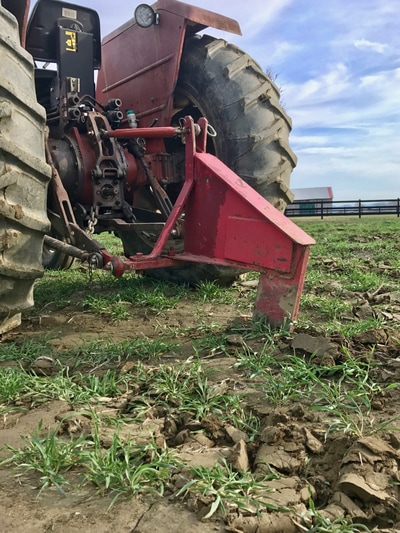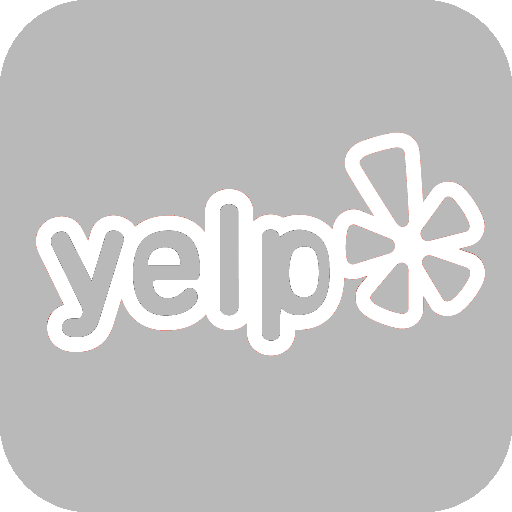|
It's time to up your salad game! The farmstand will be overflowing with a variety of leafy greens for you to choose from like spinach, kale, chard, romaine, red leaf, green leaf and bibb, just to name a few.
If you love iceberg lettuce and you're still on the fence about adding a different kind of leafy green to your shopping list, May is the month to try something new! Why eat leafy greens? One, because they are so good for you! Greens contain almost no calories. You can eat these in volume, so there is lots to munch on. Their sodium content is almost nil. They contain about a gram of carbs, maybe two, barely a gram of protein and about a gram of fiber per cup. The darker greens, like spinach, romaine, and leaf lettuce, contain more of certain nutrients, including vitamin A and other carotenoids, vitamin C and potassium, over the iceberg variety. Greens like arugula, collard greens, kale, mustard greens and turnip greens, also contain these nutrients, along with other potentially cancer-preventing compounds, called isothiocyanates and indoles, unique to these types of vegetables. Iceberg vs Leafy Greens For many years "iceberg" was the most popular lettuce at the family dinner table. Romaine and leaf lettuces (green leaf, red leaf, butter and bibb), are now the most consumed, followed by spinach. Collard greens, escarole, kale, mustard greens, chard, and turnip greens, are consumed much less, but people now are realizing the health benefits and the potential in the kitchen. Tips:
Related: For more Homegrown News subscribe to my newsletter! Like or Tweet this article to a friend by clicking the badges below. Thank you for your support.
0 Comments
Many thanks to everyone who entered our first-ever Earth Day Giveaway! We feel thankful for our local following and we are super excited to announce the winners!
Congratulations Christine Roberts and Catherine Englehardt! You've won a selection of farm fresh vegetables and one of our new Bardwell Farm t-shirts! We will be contacting you sometime during mid-May to arrange your prize pick-up or delivery, stay tuned! Salads in a jar have been popular for the last several years, and you might even be sick of looking at all of those recipes, pictures, and food videos on social media, but have you ever really given them a try? They’re healthy, portable, eco-friendly, inexpensive, long-lasting, and have built-in portion control. With so many benefits why haven't we! Anna Helm Baxter, author of the book Salad in a Jar: 68 Recipes for Salads and Dressings, shares her best mason jar salad tips. What’s the advantage of using a mason jar? Mason jars are made of glass, and unlike many plastics, they are non toxic. They also have tight-fitting lids which maximizes the shelf life of your salads and means there are less likely to be leaks when transporting. Is there a best way to store the dressing in a mason jar salad? In a mason jar, of course! Second to that, any tight-sealing container will do. Most dressings will keep for a week or two, but dressings containing garlic, ginger or fresh herbs should be used within a couple of days. Do you have a secret to layering salads in a jar? Always start with the dressing; the second ingredient is going to sit in the dressing so should be anything that will marinate nicely in the dressing (onions and fennel are my favorites). After that, layer in order of weight, finishing up with lighter leaves. I don’t like to add fruits, meats, nuts and cheeses until the day I’m eating the salad. You can create a little moisture barrier using a small square of parchment paper to prevent hard cheeses and nuts from going soft. What’s the best way to eat a mason jar salad? If you have a wide-mouthed jar, then eating in the jar is the best way—plus there’s no extra clean up! You can also dump the salad into a bowl. How tightly should you pack everything in there? If you’re going to eat the salad in the jar rather than dumping it out, then you want a little breathing room so that you can shake up the ingredients once you’re ready to eat. However, the jars keep better when packed tightly because there’s less space for air. I pack the jars so there’s more salad to eat! Roughly how long will mason jar salads keep? If the ingredients that go into the jar are crisp, fresh and dry, the salads can last safely for a week, and often longer. If you plan to keep them this long, remember to add meats, cheeses, nuts and fruits the day you plan to eat them. For more Homegrown News subscribe to my newsletter!
Like or Tweet this article to a friend by clicking the badges below. Thank you for your support. The season of leafy greens is upon us. Make your own dressings and free your fridge of store-bought versions with these three simple mason jar salad dressing recipes! Maple Dijon VinaigretteThis dressing is amazing on bed of chopped romaine, diced Grannysmith apple, whole toasted walnuts, and dried cranberries. Feeling really bad? Add two strips of crisp and crumbled apple wood smoked bacon!
49 Main Ranch DressingThis is a staple at our farm table, can't get enough!
Lemon Tahini DressingTry this dressing on lightly grilled asparagus spears or a wilted spinach salad with strawberries, either way you won't be disappointed!
For more Homegrown News subscribe to my newsletter!
Like or Tweet this article to a friend by clicking the badges below. Thank you for your support. These words of wisdom go back almost 300 years!
For more Homegrown News subscribe to my newsletter!
Like or Tweet this article to a friend by clicking the badges below. Thank you for your support. We love it for its intense flavor and it will always be a staple in our kitchens, but did you know “the stinking rose” has been used for centuries as a home remedy. Read why garlic is the food of the gods! Valued as a health-protector for thousands of years, garlic bulbs are a useful antibiotic, and can also reduce the risk of both heart disease and cancer.
Although often used in small quantities, garlic can still make an impact on health. It is rich in powerful sulfur compounds that cause garlic's strong odor but are the main source of its health benefits. Research has found that garlic can help minimize the risk of both heart disease and many types of cancer. It is also a powerful antibiotic and inhibits fungal infections such as athlete's foot. It also appears to minimize stomach ulcers. Eaten in reasonable quantity, it is also a good source of vitamin C, selenium, potassium, and calcium. The Good Stuff:
Facts:
Related: For more Homegrown News subscribe to my newsletter! Reference: 100 Best health Foods, Eat This Not That, Cooking Light What to Eat Like or Tweet this article to a friend by clicking the badges below. Thank you for your support. The Cook's Carrot Whisk
Fred & Friends $12 Whether you're whipping up a crepe or a carrot cake, the cooks carrot will help make it happen. The wires are coated with a green durable, and easy-cleaning silicone making for easier whisking. The handle is plump, cushy silicone too; fits perfect in the hand for those long tough whisk jobs. The whisk is also completely safe on the top rack of the dishwasher. Silicon Garlic Peeler Easem $5 A quick and easy way to peel whole garlic cloves! No garlic odor left on your hands or countertop. Easem's Silicon Garlic Peeler is dishwasher-safe. VOFO Herb Scissors Stainless Steel VOFO $9 Say good-bye to tedious mincing and chopping with the most useful, fun kitchen gadget ever! Two snips with the sharp, finely balanced 5 blades equals 10 knife chops. It will be one of your favorite kitchen tools for your home herb garden! Kitchen Candy Collapsible Over the Sink Colander JB Enterprises, Inc $18 Space saving design and collapses to less than 1-5/8 inches in height. Colander capacity holds 6 quarts of your favorite pasta, vegetables, fruit, leafy greens, or canned foods. It can be used in or over a sink and freestanding on a counter or table. Also dishwasher safe! Kikkerland Hedgehog 60-Minute Kitchen Timer Kikkerland $8 Adorable hedgehog kitchen timer goes up to 60 minutes. Turn clockwise to 60 minutes, then counter clockwise to set desired time. It has a steel mechanism with plastic exterior and measures 2.5 x 1.75 inches. FridgePad 2 Woodford Designs $22 The FridgePad 2 is the best way to store and display your iPad in your home and office. No tools are required to magnetically mount the FridgePad 2 and your iPad to your fridge door so it's on proud display in the heart of your home. We have completely redesigned the FridgePad so that it now works with far more devices, spins 360 degrees for easy landscape or portrait viewing, works with iPad cases, has super fast iPad mounting and still retains the ultra secure slam proof magnetic mount. For more Homegrown News subscribe to my newsletter! Like or Tweet this article to a friend by clicking the badges below. Thank you for your support. Last night I was in the greenhouse transplanting eggplant seedlings from row trays into cell trays. The Classic and Nubia varieties looked great since seeding them! "The tiny seed knew that in order to grow, it needed to be dropped in the dirt, covered in darkness, and struggle to reach the light." - Sandra King Because seeds don’t have a 100% germination rate we transplant seedlings into cell trays to ensure we have perfect germination before going into the field. We want to have accurate seedling numbers to plan the field layout. The plants will grow more effectively and can also be monitored more easily. Seedlings are planted with one root shoot to make it easier when transplanting into the smaller cells. We use a wooden hole punch to make a place to plant seedlings. Peppers are next on the greenhouse schedule, more behind the scenes to come! If you want to learn a little more about our tray system and germination, continue on below. What is seed germination? When a seed is covered with soil, it can begin germination. Germination is the process of seeds developing into new plants. Environmental conditions must trigger the seed to grow. This is determined by how deep the seed is planted, water availability, and temperature. When moisture is plentiful, the seed fills with water in a process called imbibition. The water activates special proteins, called enzymes, that begin the process of seed growth. First the seed grows a root to access the moisture. Next, the shoots, or growth above ground, begin to appear. The shoot on the surface of the soil will grow leaves, where it will harvest energy from the sun. The leaves continue to grow towards the light source in a process called photomorphogenesis. For more Homegrown News subscribe to my newsletter!
Like or Tweet this article to a friend by clicking the badges below. Thank you for your support. Watch and listen to the 1978 speech delivered by radio broadcaster Paul Harvey at the Future Farmers of America Convention, reimagined by Photographer Danielle Blumer. I can listen to this a thousand times and it never gets old. For more Homegrown News subscribe to my newsletter!
Like or Tweet this article to a friend by clicking the badges below. Thank you for your support. With the warm weather things are beginning to speed up around the farm! Working the land makes me so happy and riding the tractor puts a stupid ol' smile on my face :) Yesterday, I started up the Massey Fergusson and subsoiled the field. What, you don't know what subsoiling is? Well let me explain... "To forget how to dig the earth and tend the soil is to forget ourselves." - Mahatma Gandhi Subsoiling is the act of breaking-up the compacted layers (pans) of the soil to create better drainage and root growth for the plants. With constant plowing or tillage of a field, the soil tends to get hard and compacted resulting in more water run off, erosion, and in the end, poor plant development. By using a subsoiler to breakup these hard packed pans (layers) between the top soil and subsoil layers you are creating a better environment for plants to thrive by loosening the actual layers. A subsoiler is a long shank approximately two feet long that can cut depths up to 20 inches, whereas regular tilling equipment would only go to a max depth of about twelve inches. The subsoiler we use is called a "one shank tooth" and you can see why it's so effective. We make a complete pass every five to six feet, or tractor tire to tire, back and forth, until the field is complete. For more Homegrown News subscribe to my newsletter!
Like or Tweet this article to a friend by clicking the badges below. Thank you for your support. |
AboutFollow Bardwell Farm and all of our adventures here! Archives
April 2024
Categories
All
Gift CardsGive the gift of a CSA farm share or farmstand goods with gift certificate from Bardwell Farm! NewsletterSubscribe to Harry's Farmstand Monthly newsletter! |
DIRECTIONS |
|
|
©2022 BARDWELL FARM, ALL RIGHTS RESERVED
|
















 RSS Feed
RSS Feed


